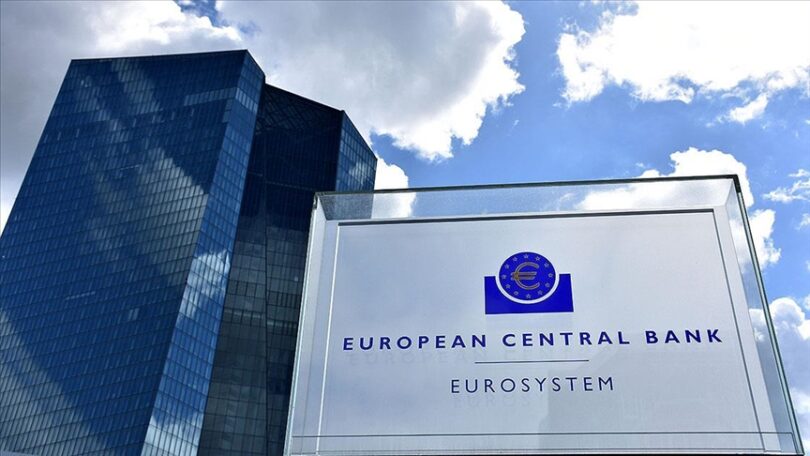Understanding the European Central Bank (ECB) interest rates is crucial for anyone interested in economics, finance, or even everyday spending habits. The ECB plays a significant role in shaping monetary policy in the Eurozone, influencing everything from inflation rates to loan interest rates. In this article, we will delve into the intricacies of the ECB’s monetary policy, the factors driving potential interest rate changes, and what these changes mean for the average citizen.
What is the European Central Bank?
The European Central Bank, often referred to as the ECB, is the central bank for the Eurozone, which comprises 19 of the 27 European Union (EU) member states that have adopted the euro as their official currency. Established in 1998, the ECB’s primary objective is to maintain price stability within the Eurozone, which it does by managing monetary policy and interest rates.
ALSO SEE: Inflation Rates in Europe: Analysis of How Inflation is Expected to Decline Further in the EU
Understanding Interest Rates
Interest rates are essentially the cost of borrowing money. They can influence consumer spending, investment decisions, and overall economic growth. When the ECB adjusts interest rates, it has a direct impact on loans, mortgages, and savings rates across the Eurozone. But why does the ECB change interest rates? Let’s explore.
The Role of Interest Rates in Monetary Policy
The ECB uses interest rates as a primary tool to control inflation and stabilize the economy. When the economy is growing too quickly, and inflation is rising, the ECB may raise interest rates to cool down spending and borrowing. Conversely, in times of economic downturn, the ECB might lower interest rates to encourage borrowing and stimulate growth.
Inflation Control
Inflation is a significant concern for the ECB. Price stability is one of its primary mandates. By adjusting interest rates, the ECB can influence inflation levels. A higher interest rate typically reduces consumer spending, thereby slowing down inflation. On the other hand, lower interest rates can lead to increased spending and investment, which might boost inflation.
Economic Growth and Stability
Interest rates also play a crucial role in promoting economic growth. Lower rates make borrowing cheaper for businesses and consumers, stimulating investment and spending. Higher rates can slow down economic growth, which can be necessary to prevent overheating in a robust economy.
Recent Trends in ECB Interest Rates
In recent years, the ECB has faced numerous challenges. From the aftermath of the 2008 financial crisis to the ongoing impact of the COVID-19 pandemic, the ECB has continually adjusted its monetary policy. Understanding these trends can help us predict potential future changes in interest rates.
Post-Pandemic Recovery
The COVID-19 pandemic led to unprecedented economic disruption. To support the economy, the ECB slashed interest rates to near zero and implemented various quantitative easing measures. As economies began to recover, the ECB faced the dilemma of whether to keep rates low to support recovery or to start raising them to combat inflation.
Current Interest Rate Environment
As of now, the ECB’s interest rates are still low, but inflation rates are rising. This situation creates pressure on the ECB to consider rate hikes in the near future. The decision to increase rates will depend on a multitude of factors, including inflation trends and economic growth forecasts.
Factors Influencing ECB Interest Rate Decisions
Several factors come into play when the ECB considers changing interest rates. Understanding these factors provides insights into potential future changes.
Economic Indicators
The ECB closely monitors economic indicators such as GDP growth, unemployment rates, and consumer spending. These metrics help gauge the overall health of the Eurozone economy and inform interest rate decisions. For example, if GDP growth is robust, the ECB may consider raising rates to prevent inflation.
Inflation Rates
Inflation is a critical factor for the ECB. If inflation exceeds the target level of just below 2%, the ECB may increase interest rates to control it. Conversely, if inflation is low, the ECB may lower rates to stimulate economic activity.
Global Economic Conditions
The global economy also plays a significant role in ECB interest rate decisions. Economic slowdowns in major economies, like the United States or China, can have ripple effects in the Eurozone. The ECB must consider these external factors when determining its monetary policy.
Political Stability and Uncertainty
Political events, such as elections, policy changes, or geopolitical tensions, can impact the economy and, consequently, interest rate decisions. For instance, uncertainty surrounding Brexit influenced ECB policies, as it created volatility in the Eurozone economy.
Potential Future Changes in ECB Interest Rates
With the current economic landscape, the question on everyone’s mind is: What’s next for ECB interest rates? While predictions can vary, a few scenarios are worth considering.
Gradual Rate Increases
Given the rising inflation rates, many analysts predict that the ECB may opt for gradual rate increases. This approach would allow the ECB to monitor the impact on the economy while still providing support during the recovery phase.
Maintaining Low Rates
Alternatively, the ECB might choose to keep interest rates low for an extended period, especially if the economic recovery is fragile. This decision would prioritize boosting growth and employment over controlling inflation.
Reacting to Economic Changes
The ECB must remain flexible in its approach. If economic conditions change unexpectedly, such as a new wave of COVID-19 or geopolitical crises, the ECB may need to adjust its strategy accordingly.
Impact of ECB Interest Rate Changes on Consumers
Interest rate changes can have a direct impact on consumers, affecting loans, mortgages, and savings.
Mortgage Rates
For homeowners and prospective buyers, ECB interest rate changes can significantly impact mortgage rates. A rise in rates typically leads to higher mortgage costs, while lower rates can make home loans more affordable.
Savings Accounts
Consumers with savings accounts also feel the effects of interest rate changes. Higher rates can lead to better returns on savings, encouraging people to save more. Conversely, lower rates may discourage saving and promote spending.
Consumer Loans
Interest rates on personal loans and credit cards are also influenced by the ECB’s monetary policy. As rates increase, borrowing costs rise, which can lead to a decrease in consumer spending.
Conclusion
In conclusion, understanding the dynamics of ECB interest rates is essential for grasping the broader economic landscape of the Eurozone. With the potential for rate changes on the horizon, both consumers and businesses must stay informed. The ECB’s decisions will continue to influence inflation, economic growth, and everyday financial choices.
FAQs
1. What does the ECB do?
The European Central Bank manages monetary policy for the Eurozone, aiming to maintain price stability and oversee the euro currency.
2. Why are interest rates important?
Interest rates affect borrowing costs, savings returns, and overall economic activity. They play a crucial role in managing inflation and stimulating growth.
3. How does the ECB decide on interest rate changes?
The ECB considers economic indicators, inflation rates, global economic conditions, and political stability when determining interest rate adjustments.
4. What impact do ECB interest rate changes have on my mortgage?
If the ECB raises interest rates, mortgage costs may increase, making loans more expensive for borrowers. Conversely, lower rates can reduce mortgage payments.
5. How can I prepare for potential interest rate changes?
Staying informed about economic trends and the ECB’s policies can help you make informed decisions regarding loans and savings, ensuring you’re prepared for any rate changes.






